Should Marketers Go For AI-Powered Contextual Brand Safety Technology?
PUBLISH DATE: 27 September 2021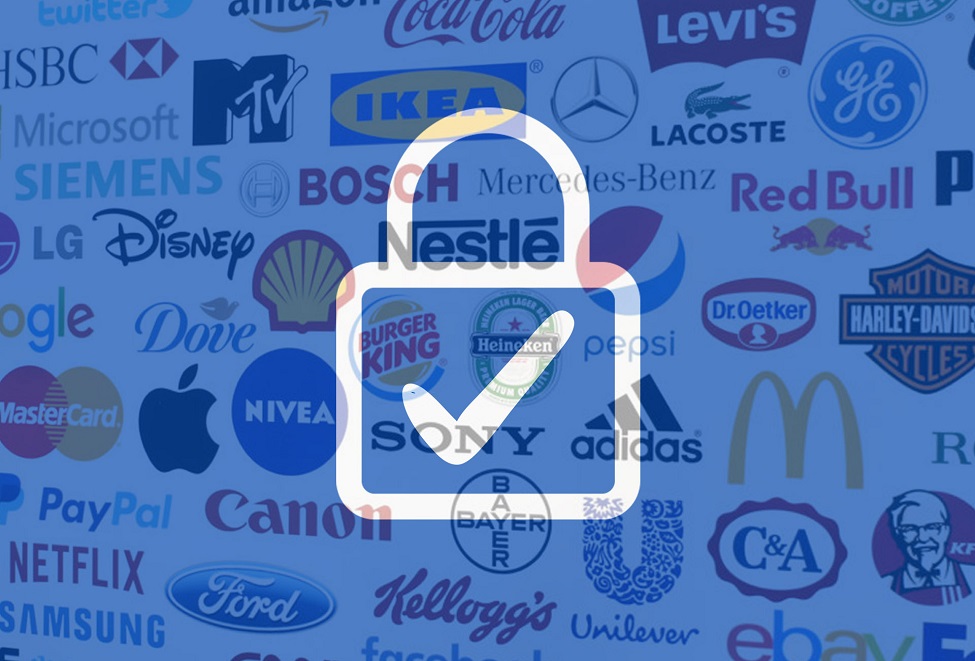
In the wake of vast amount of harmful content on the internet, brand safety has become a primary focus for marketers when it comes to digital advertising.
Brands should not only be careful about the content of their messages, but should also be heedful of the environment in which their ads are being placed. Context is extremely important for brands in the case of online advertising.
The brand safety tools that marketers are currently using aren’t providing optimal results
To prevent damage to brands’ image, marketers are implementing different types of brand safety solutions. But most of these solutions or tools date back to the advent of programmatic advertising and are not effective enough to ensure a satisfactory level of brand safety. Moreover, there is no ready-made tool that can suit the requirements of all brands. A brand has to customize the solution in order to meet its specific needs.
Most of the brand safety tools used by marketers today rely on blacklists and whitelists. A blacklist is made up of different keywords that a brand considers harmful or inappropriate for its business. The content that has the blacklisted keywords is blocked by the tool, and therefore, no ads get placed next to such content. The keyword-based tools are unable to comprehend nuances in context and often lead to blocking of safe content. This negatively impacts an advertising campaign’s performance, as reach is considerably reduced.
A whitelist is a list of websites or web pages that are considered safe by a brand for running its ads. As whitelist offers a closed environment, reach of an ad campaign is significantly reached. Moreover, a whitelist curator has to update the list from time to time so that newer safe content does not get missed.
Although private marketplaces provide a safe advertising environment, they have their own limitations
Many marketers consider private marketplaces as a solution to the brand safety problem. In a private marketplace, only exclusive parties take part in programmatic ad buying and selling. A private marketplace works only on an invite-only basis, unlike an open marketplace. Publishers invite only chosen advertisers for bidding on the select ad spots. Brands know the brand safety status of publishers from whom they purchase the ad spots in private marketplaces. This provides them confidence that their ads will not be placed in a harmful environment. The most important limitation of using a private marketplace is the decrease in campaign’s reach.
AI-powered contextual targeting offers the true solution to the brand safety menace
Brand safety technology that makes use of AI-powered contextual targeting is not only the latest but also the most advanced solution to the brand safety problem. AI-powered contextual brand safety technology accurately understands nuances in context, and therefore, does not lead to over blocking of content, unlike conventional solutions.
Apart from generic harmful contexts such as terrorism, obscenity, etc., AI can also detect brand-defined inappropriate contexts, thus providing brand suitability along with brand safety. AI-based brand safety solutions effectively detect unsafe and unsuitable contexts in online videos, thus offering a brand safe and suitable video advertising environment to marketers.
If marketers want a brand safety solution that is highly effective, does not block safe content and does not kill an advertising campaign’s reach, then they should go for AI-powered contextual brand safety technology.
How Brands can Drive Success on YouTube with Unique Ads?
PUBLISH DATE: 20 September 2021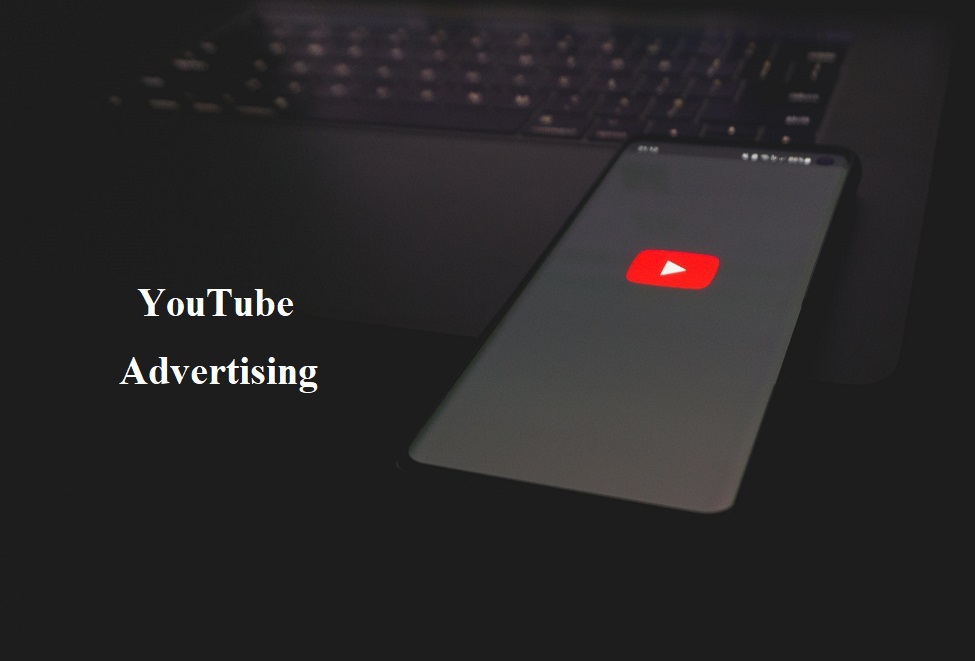
Most of the marketers consider YouTube as the best platform for video advertising. But running an ordinary YouTube ad campaign may not offer excellent results.
To get impressive results, marketers need to push the boundaries of storytelling and create unique, unforgettable ads that resonate deeply with audiences. Brands that use fresh, creative ways for storytelling are able to engage huge audiences and generate significant business impact.
Below is discussed how brands can drive success from their YouTube advertising campaigns by making their ads stand out from others.
Create Daring and Disruptive Stories
A brand can come into the spotlight by using daring and disruptive stories, especially when it has limited advertising budget.
In order to make its place in the Philippines’ beverage market already dominated by global brands, a soft drink company created a video ad depicting a weird story of a boy and his mother. During the latter part of the ad, mother removes her head and a soft drink bottle appears in place of her head. The story has shades of humor, sentiment and absurdity, all in one package.
This experimental and courageous move by the beverage company resulted in an increase of sixty-three percent in its sales.
Create Episodic Video Ads
By creating multiple videos featuring episodic content, brands can keep their audiences coming back for more. Such YouTube video ads have a narrative structure resembling TV series. Each video incites curiosity to watch more.
During lockdowns, last year, due to the pandemic, a steep rise in delivery of food to doorstep was witnessed. But for those companies that didn’t have delivery infrastructure, revenue loss was inevitable. A Filipino pizza company suffered a loss of eighty percent in revenue because of no delivery infrastructure.
In order to make people go to its pizza stores, the company created a series of six-second bumper ads. The ads were delivered as pre-roll YouTube video ads. As non-skippable pre-roll ads are regarded as highly annoying, the pizza brand created a series of somewhat funny video ads that apologized to audiences for interruption, and then persuaded them to visit its stores if in case they were able to safely come out of their homes. This YouTube ad campaign was a great success, as the pizza chain was able to surpass its sales targets.
Collaborate with Content Creators
YouTube viewers build a connection with popular content creators. YouTube campaigns that make use of collaboration between brands and content creators drive impressive results. By including content creators in their YouTube video ads, brands are able to create authentic connections with consumers.
A noodle brand wanted to run an awareness campaign for relaunch of its original thin noodles. The brand created a YouTube ad campaign led by a funny vlogger with millions of subscribers. The vlogger called out viewers to try the thin noodles. The campaign achieved an eighteen percent higher view through rate in comparison to campaigns that did not leverage a content creator. The noodle brand saw significant lifts in brand favorability and consumers’ purchase intent.
Create Video Ads that have a Purpose
Video ads that address a social cause are able to create a strong association between consumers and brands. Brands that support community despite their own challenges are able to cast a powerful impact on consumers.
A YouTube advertising campaign ran by a telecom brand to promote a new Star Wars film earned it a gold award. The video displayed the brand’s support for disabled people. It featured two boys creating a special in-home viewing experience of the new film for their hearing-impaired friend. The brand achieved eighty-four percent lift in message recall and reinforced its position in social advocacy.
By creating unique, unforgettable YouTube video ads, brands can cast a powerful impact on the minds of consumers, leading to lifts in brand awareness, brand favorability and purchase intent.
3 Ways to Maximize Brand Awareness and Reach on YouTube
PUBLISH DATE: 01 September 2021
Marketers are increasingly investing in YouTube advertising in order to achieve their video marketing goals. But achieving these goals is not an easy task, and involves the use of an effective YouTube advertising strategy and proven approaches.
Below are discussed some proven YouTube advertising approaches to make it easier for marketers to maximize brand awareness, reach, and cost efficiency.
Use Reach Planner for Maximizing the Campaign’s Effectiveness
In order to maximize effectiveness of their YouTube campaigns, marketers should use a tool provided by Google known as Reach Planner. This tool makes use of real-time data to show a YouTube campaign’s expected reach based on settings such as ad types, audience, campaign budget, etc. By making little changes to inputs, marketers can see how their video advertising campaign’s projected reach and frequency get affected.
For example, a children’s apparel brand leveraged Reach Planner for its YouTube campaign for getting insights into the reach and frequency for two different audience segments, viz. first-party and Google. Reach Planner helped it in finding out the right budget and strategy for driving maximum impact. The campaign was able to achieve a unique reach of more than fifty million at a significantly lower cost per view in comparison to brand’s average YouTube campaign.
Reach Planner also allows marketers to plan their YouTube advertising campaign alongside their television advertising campaign in order to understand the combined reach and efficiency of their overall ad campaign.
Use Video Reach Campaigns
By using two or more cost per thousand impressions ad formats on YouTube such as six seconds bumper ads, skippable ads or non-skippable ads, marketers can achieve maximal brand awareness and ad recall. YouTube offers video reach campaigns to streamline budget allocation between different CPM ad formats.
Video reach campaigns offer a great advantage by automatically optimizing across different types of ad formats in order to reach as many YouTube viewers as possible for the least price. YouTube data shows that brands that leverage video reach campaigns can drive from twenty-nine percent to forty-four percent more reach at a sixteen percent lesser CPM in comparison to brands that run YouTube advertising campaigns using single ad format.
For example, a Portuguese cosmetics’ brand used video reach campaigns to promote its hair serum product and drove its maximum reach ever. The brand was able to reach thirty-two percent more viewers and witnessed a reduction of forty-one percent in the cost per reach point in comparison to campaigns optimized manually.
Use Brand Lift to Adjust YouTube Ad Campaign in Real Time
Brand Lift helps marketers in measuring the effectiveness of a YouTube ad campaign and making required adjustments in real time. It allows measurement of campaign’s brand awareness impact and ad recall. It even helps marketers in gauging the impact of campaign in its crucial first days. By making use of the remeasurement feature, marketers can evaluate the impact of adjustments such as swapping of creatives and mid-flight changes.
By using above-mentioned tools and approaches marketers can boost effectiveness and cost efficiency of their YouTube campaigns, and achieve greater brand awareness and reach.
Using YouTube Advertising as a Powerful Performance Driver
PUBLISH DATE: 25 August 2021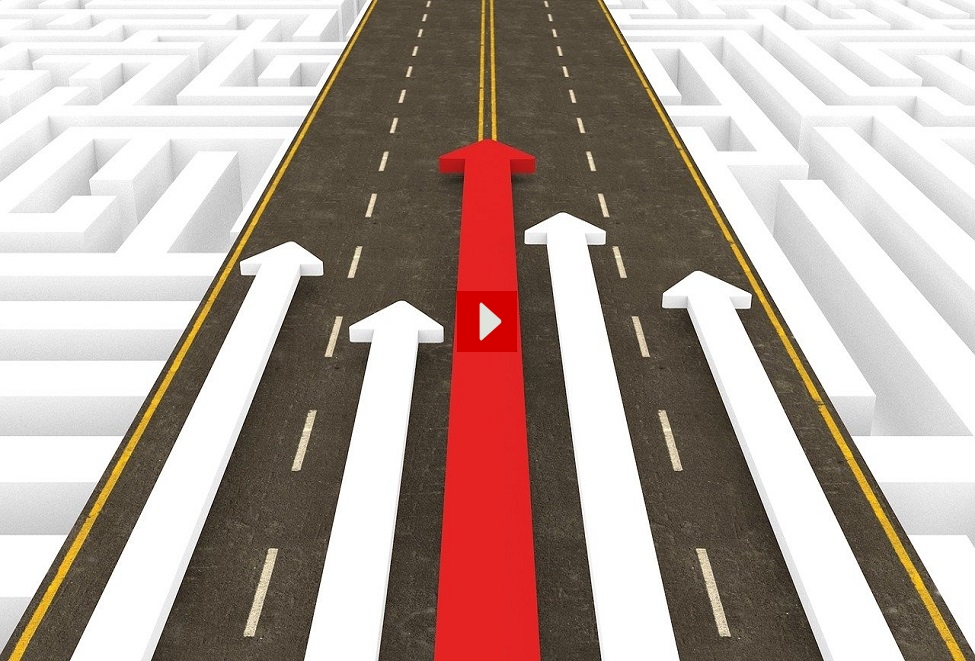
Video is an essential tool for businesses to maximize their presence in the digital world and reach consumers across their purchase journey. But some marketers think that it serves only the purpose of brand building.
The fact is that apart from brand building, video is a highly effective performance driver. A study by Google shows that seventy percent of consumers buy from a brand after seeing it on YouTube.
YouTube video ads act as a powerful engine for achieving goals of both brand and performance marketers, which include creating and fulfilling demand.
Below are discussed some YouTube advertising strategies that can help marketers use video for both brand building and driving action.
Make Strategic Tweaks to Creative According to Consumer Behavior
Marketers should make tweaks to video creative according to changes in consumer behavior. For example, online shopping is gaining prominence among people, so by making small changes to their YouTube campaigns, marketers can effectively adapt to changing consumer behavior and achieve their ecommerce goals.
During the lockdown, when a US-based cosmetics company had to close its physical stores, its marketing team reshaped its strategy to focus on bringing consumers to its ecommerce website. The cosmetics brand repurposed its existing video creative by including a call to action. It then ran a TrueView for action campaign by using the modified creative. The video ad prompted people to click on the attractive offer. This simple tweak to the video creative helped the brand to effectively achieve its conversion goals.
Create YouTube Video Ad that Match Consumers’ Interests and Intent
In order to form a meaningful and deeper connection with consumers, ad content should reflect their preferences, intent and interests. An American security solutions company achieved highly impressive results by customizing messages according to audiences. The company’s marketing research team identified certain audience segments that were more interested in security solutions in comparison to others. To target these audiences, the security brand used video ad sequencing and delivered action-oriented tailored messages. The brand witnessed significant lifts in favorability, consideration and conversion rate.
Serve Ads that Meet Consumers’ Demand
By considering the trending searches on Google and YouTube related to its products, a brand can create ads that meet consumer needs. An online education courses provider took note of the search queries trending on YouTube related to its course offerings. It served action-oriented YouTube video ads related to the searches, for example, to those searching for gardening tips, a gardening course ad with a call to action was served. This approach not only drove brand awareness, but also action. The education brand saw a significant increase in website traffic and course sign-ups.
By using the above approaches, marketers can boost the impact of their YouTube advertising campaigns and effectively achieve both brand building and performance goals.
How Marketers can Adapt to Latest Video Watching Trends to Drive Results?
PUBLISH DATE: 18 August 2021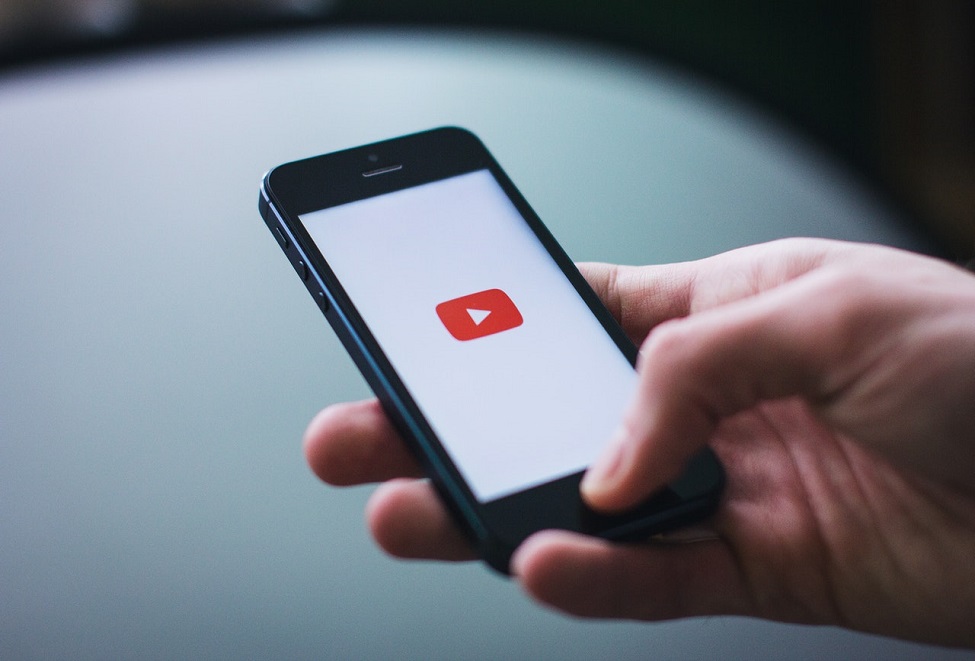
Video consumption is undergoing dramatic shifts in terms of what people are watching and how they are watching. People are increasingly shifting from traditional TV to online video content provided by mammoth video hosting platforms such as YouTube. Although watching YouTube videos on smartphones is still very popular, more and more people are consuming YouTube on their TV screens.
Here are some ways that can help marketers in adapting to the latest video-watching trends and achieve success.
Connect with People Right Where They are Watching
YouTube viewership on connected TV is growing at a rapid rate. Brands and their YouTube marketing companies should focus on reaching the YouTube audiences on the big screen. For example, when car showrooms got closed due to the pandemic, a Korean multinational automobile manufacturer achieved the scale and impact it aimed for through YouTube on connected TV. The brand achieved an increase of sixteen percent in digital leads and fifteen percent in the market share.
Create E-commerce Videos to Facilitate Sales
People all over the world are increasingly doing online shopping not only for low-budget products but also for high-end products. Before buying a product, consumers prefer to watch product and brand videos on YouTube. More than sixty percent of viewers on YouTube have admitted that they bought a product/service from a brand after seeing its ad on YouTube.
Google’s TrueView for action campaigns’ data shows that YouTube video ads having action formats are leading to about a billion conversions per year. During the lockdown last year, due to the pandemic, an American cosmetics brand decided to increase traffic to its ecommerce website. It effectively achieved its conversion goals by repurposing its existing video ad and running a TrueView for action campaign.
Create Captivating YouTube-Friendly Video Ads
As more and more people are now watching YouTube over traditional TV, create video ads specifically for YouTube; do not directly use ads created for TV on YouTube. A successful YouTube advertising campaign requires a captivating video ad created by following YouTube best practices. In order to drive impact through YouTube campaigns, marketers should make best use of their creativity along with high performing ad formats.
Use the Right Mix of TV and YouTube for Video Advertising campaigns
By leveraging Google Ads campaign planning tool, known as Reach Planner, marketers can find out the right mix of TV and YouTube. Reach Planner helps a video ad agency in maximizing video advertising campaigns’ reach while improving frequency. It makes use of YouTube forecasts along with historical TV campaign data obtained from the 3rd party data measurement providers in order to enable marketers to plan TV and YouTube together.
By using the above-mentioned tactics, marketers can effectively adapt to the latest video watching trends and achieve excellent results through their video marketing efforts.
How SMBs can Create a Successful YouTube Marketing Strategy?
PUBLISH DATE: 11 August 2021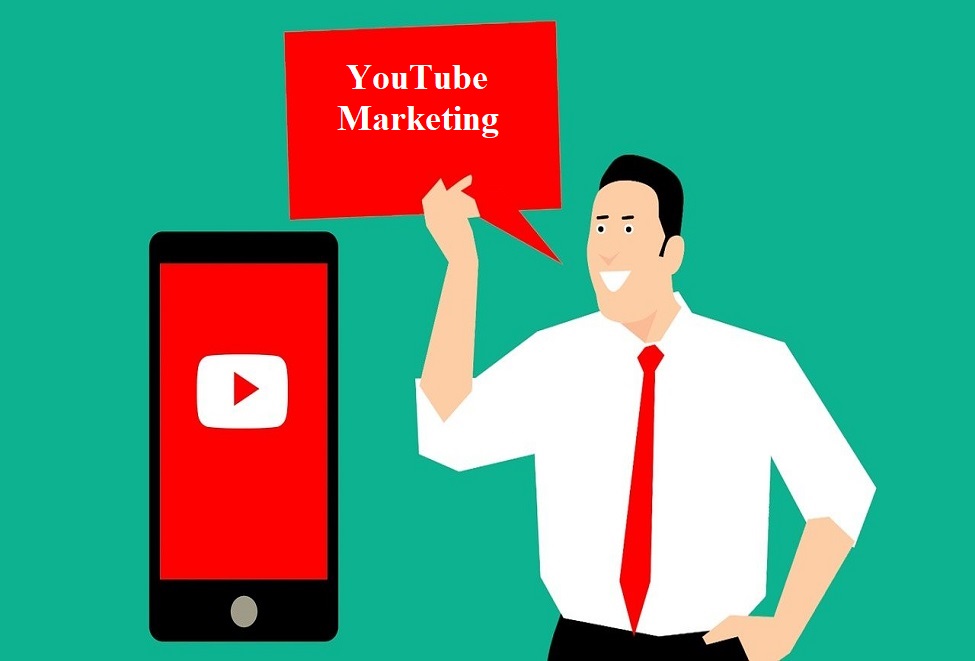
Over two billion people from around the world watch video content on YouTube every month. More than one billion hours of YouTube videos are watched every day. People are consuming YouTube from wherever they are and whenever they desire.
YouTube offers a great opportunity to businesses of any size including small and medium-sized businesses (SMBs) to effectively reach consumers. Here are few recommendations that SMBs can incorporate into their video marketing strategy to achieve success on YouTube.
Start and Brand a YouTube Channel
It is very important for a small or medium-sized business to start a YouTube channel. In a YouTube impact study, seventy-three percent of small businesses having a YouTube channel said that it helped them increase their customer base. SMBs can either manage their YouTube channels themselves or partner with YouTube marketing companies.
By branding its YouTube channel, a small or medium-sized business can attract new YouTube viewers, and deliver a signal to its customers that the channel they are viewing is a part of bigger brand experience. Through the branding tab, one can add a profile picture, a video watermark and a banner image. Links to brands’ website and social accounts can be added through the basic info tab. A business can customize its YouTube channel by adding a featured video for returning subscribers and a channel trailer for people who have not subscribed.
Create Videos that Meet Business Goals
While there is no limit to the type of video content that can be created, it is best to have videos that are focused on the business goals. Majority of YouTube channels operated by small businesses use videos that feature their products or services. SMBs can also use how-to-videos which can attract new viewers and lead to sales through links to product pages, or behind-the-scenes videos that can help set up their expertise in the market.
Optimize Channel and Videos to Build Subscribers and Customers
Majority of SMBs having a YouTube channel agree that it helps them in connecting with new customers from around the globe. To build subscribers and customers, channels and videos should be optimized. Videos and channel should have a clear CTA that either leads to subscription or to the product page on the business’ website. Keywords should be added in a video’s description field and tags in the tags box. A business should regularly post new captivating videos including trailers and teasers to keep subscribers engaged and for fetching new subscribers.
Run a YouTube Ad Campaign
Run a contextual advertising campaign on YouTube to reach a huge audience and drive massive engagement with the brand. Contextual targeting allows marketers to run YouTube ads that are contextually relevant to the video content the viewers are consuming at the moment. By leveraging YouTube contextual targeting, a high return on ad spend can be obtained.
By incorporating the above recommendations into their video marketing strategy, small and medium-sized businesses can make the best use of YouTube for growing their business.
Busting Myths about YouTube Advertising
PUBLISH DATE: 02 August 2021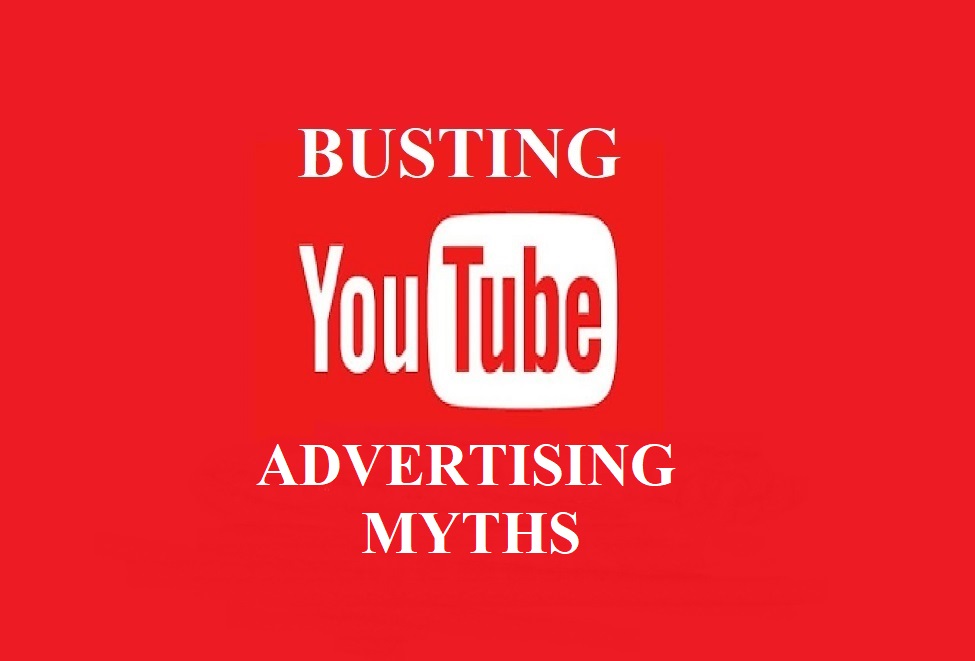
YouTube, being the world’s largest video hosting website in the world, offers grand opportunities to brands for video advertising. When used with an effective strategy, YouTube advertising almost always brings success for marketers.
But, over time, some marketers have developed certain misconceptions about YouTube advertising. This article tries to bust these myths.
Myth 1: Getting success with YouTube ads is entirely a guesswork
Running successful YouTube campaigns is not a guesswork. There are certain basic principles that can help marketers create effective YouTube ads. For making a creative that casts great impact on audience, marketers should follow the ABCD principle.
A in the ABCD principle stands for Attract – creative should catch attention of the audience from the starting. B stands for Brand – creative should integrate the brand in a natural way. C in the ABCD principle denotes Connect – creative should make use of emotions and storytelling for connecting with the audience. D stands for Direct – creative should include a clear call to action.
A study by Google and Kantar that considered eleven thousand ads found that ads that follow the ABCD principle achieve thirty percent increase in short-term sales likelihood and seventeen percent increase in long-term brand contribution.
Myth 2: Successful ads on YouTube incorporate a certain defined look and style
There is no one-size-fits-all approach to creatives. The content of the ad and the impact that content has on people are more important than the factors such as look and style.
There are varied types of ads that have been successful on YouTube such as episodic series, product reviews, interviews, music videos, undercover investigations, animated ads, etc. So, there is not any single specific ad style that works, any ad can become successful if it is powered by captivating creativity. By using best of their imagination, marketers can create really effective YouTube video ads.
Myth 3: Lower-funnel YouTube ads are less creative in comparison to upper-funnel ads
There is a misconception that lower-funnel YouTube ads cheapen a brand’s story. Marketers can get highly creative with CTAs. Marketers should think about the lower-funnel ads as the beginning of the next action of consumers. A creative approach to lower-funnel ads can be applied by aligning the ad with the passion points of the consumers and giving them a more directed offer.
Myth 4: Experimenting with the creative is not worth the effort
An experimental approach to creating YouTube video ads offers long-term benefits such as deep learning to marketers, and it does not slow down a YouTube ad campaign or cost more. Each video experiment teaches new things to marketers and help them optimize their video advertising campaigns in order to draw more return on investment. Research shows that the successful use of video experiments provide sixty percent greater ad recall due to the better performing video creative.
Myth 5: TV ad works equally good on YouTube
This is not the case as experience shows. Actually, it is the other way round – attention-grabbing YouTube video ads work well on the TV. A professional network platform conducted a study to compare the performance of its TV ad running on YouTube with tailored-for-YouTube ads. It found that, on YouTube, the tailored-for-YouTube ads performed better than the TV ad. YouTube-tailored ads were better in the following metrics – consideration, ad recall, and cost efficiency.
The above myth-busting discussion will help marketers in leveraging YouTube advertising in a more effective and efficient way in order to better connect with consumers and increase conversion rate and sales.
How Creative Storytelling Helps Captivate Audiences on YouTube
PUBLISH DATE: 24 July 2021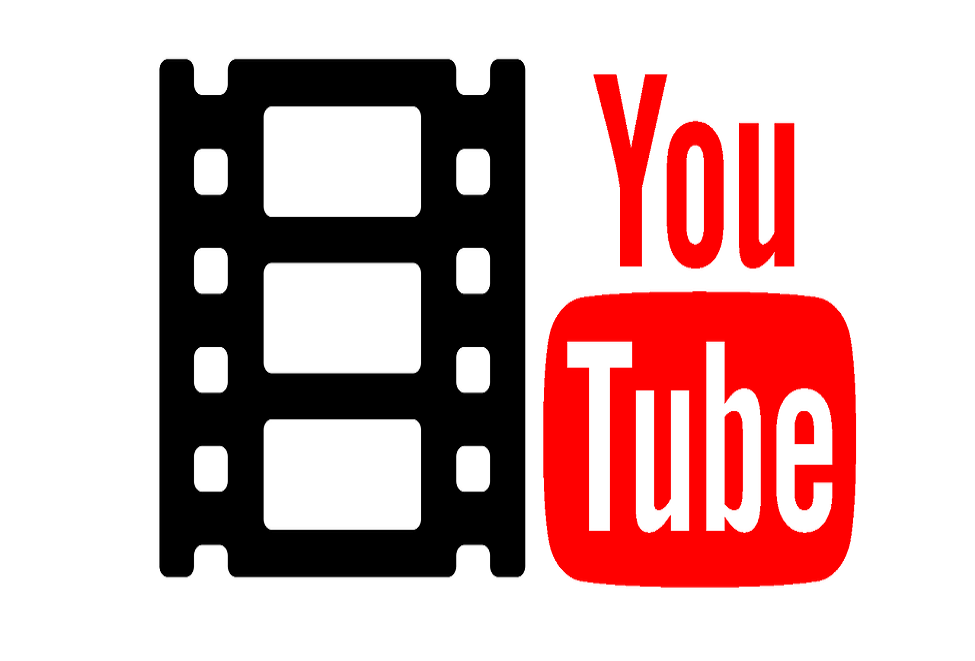
For most brands, YouTube advertising campaigns form an essential part of their digital advertising strategy. But there exists a stiff competition on YouTube when it comes to standing out from others.
Brands that leverage creative storytelling are easily able to catch people’s attention in comparison to others that do not. Here, we will see how some brands achieved their advertising goals through compelling YouTube video ads.
Resonating with the Audience by Means of Humor and Relevance
An Australian betting website created an interesting and humorous YouTube video ad that showed Aussies taking part in weird sporting feats such as grocery bag weight lifting, garbage bin racing, socks sliding, catching while jumping in the pool, etc. The ad related with the desire of every Australian to become a sports hero. Powered by fast and hilarious narrative along with bright colors, the ad proved to be a great success. The video has garnered about 2 million views and thousands of likes.
Teaming Up with Famous Creators
A meal-kit company partnered with a famous Kiwi creator in order to launch its services in New Zealand. It created a cooking show spanning five videos on YouTube. The creator’s humorous, relatable and simplicity-focused parenting stories were well aligned with the simplicity that the meal-kit brand’s services bring to meal times. The videos got fully integrated into the creator’s YouTube channel and were not perceived as interruptive ads by the viewers. The creator’s audience liked the videos very much, as if they were unsponsored content.
Powering the Video Ad with Hip-Hop Music
An online food and beverage ordering brand promoted its services among the Aussies with the help of an American rapper. The brand featured his face within the first five seconds of the video in order to captivate audience from the beginning. After that, the American rapper’s jingle kept viewers stuck to the video, which also included catchy rhymes to enchant them. The strategic execution of the video ad magnified its impact. This YouTube ad campaign also made use of masthead ad format and premium YouTube channels. The memorable video creative enabled the online food ordering brand to effectively reach its desired audience.
Through creative storytelling, brands can create highly captivating YouTube video ads that drive huge consumer engagement, boost ad recall, and provide high return on investment.
Upgrading the Ecommerce CX Journey with Video
PUBLISH DATE: 14 July 2021
Customers’ experience at an ecommerce store is not the same as it is at a brick-and-mortar store. In a physical store, customers can not only see a real product, but also can touch and feel it.
In order to match the experience offered by a real-world store, brands have been providing detailed features and specifications of products along with clear images on their ecommerce websites. For boosting customer experience and driving conversions, brands are now increasingly using video as a part of their ecommerce marketing strategy.
Why Video is an Important Part of Ecommerce Marketing Strategy?
Video boosts consumer engagement levels and helps build consumer trust in brand and its products. It provides a superb customer experience unmatched by product images and text. Video helps viewers in better knowing a product in terms of its form, features, and real-world applications. In a survey by Wyzowl, 84% participants said that they have been convinced to buy a product or service by watching a brand’s video.
Apart from product description and uses videos, testimonial videos are very important in boosting conversions and sales. In a survey, two out of three participants said that they would be more likely to buy a product or service after viewing a testimonial video showing how that product or service had benefitted someone else like them.
How Brands can Use Video for a Great Ecommerce CX Journey?
Brands can use videos on their own websites or on social media platforms such as YouTube and Facebook. These videos can carry a call to action that directly takes the viewer to the product buying page on the brand’s website.
Brand-story video
Brands can use videos to tell their story. When a visitor comes to a brand’s website for the first time, he is eager to learn more about it. Telling the story of the brand through a video exerts a more powerful impact on him than a piece of textual content with images.
Product video
Product videos are very important because they not only tell features of a product but also gives a demo of how it is used. They make viewers feel as if they are seeing the product in front of them in a physical store, thus significantly facilitating purchase. They can be used in YouTube campaigns or on other social media sites, but they must be present on the products’ pages of a brand’s ecommerce site.
Product review video
User-generated product review videos from social media added on the products’ pages of a brand’s website can heavily engage visitors and boost sales. Research shows that majority of Millennials say consumer opinions found on a company’s website have a greater impact on purchase decisions than recommendations from family and friends.
Unboxing video
Another way to enrich customers’ experience and increase engagement is to publish unboxing videos on sites like YouTube. People love seeing videos that show other people unboxing a new product that they have purchased. In fact, ‘unboxing’ is a popular search term on YouTube. Brands can contact influencers for doing unboxing videos for their products.
Video ads
Apart from the above-mentioned video types, brands can run video ads on these platforms – Instagram, Facebook, Twitter, YouTube and LinkedIn. When done in the right way, it can generate massive user engagement and drive sales. As YouTube has over two billion logged-in monthly users and more than a billion hours of YouTube videos are watched every day, YouTube video ads offer an effective way to brands to achieve their ecommerce marketing goals.
By incorporating videos in the ecommerce customer experience journey, marketers can provide consumers a firsthand experience of a brand and its products. Through ecommerce videos, brands can form deeper and more meaningful connections with consumers, and achieve significant lifts in purchase intent.
Do Your Marketing Efforts Need the ASMR Push?
PUBLISH DATE: 08 July 2021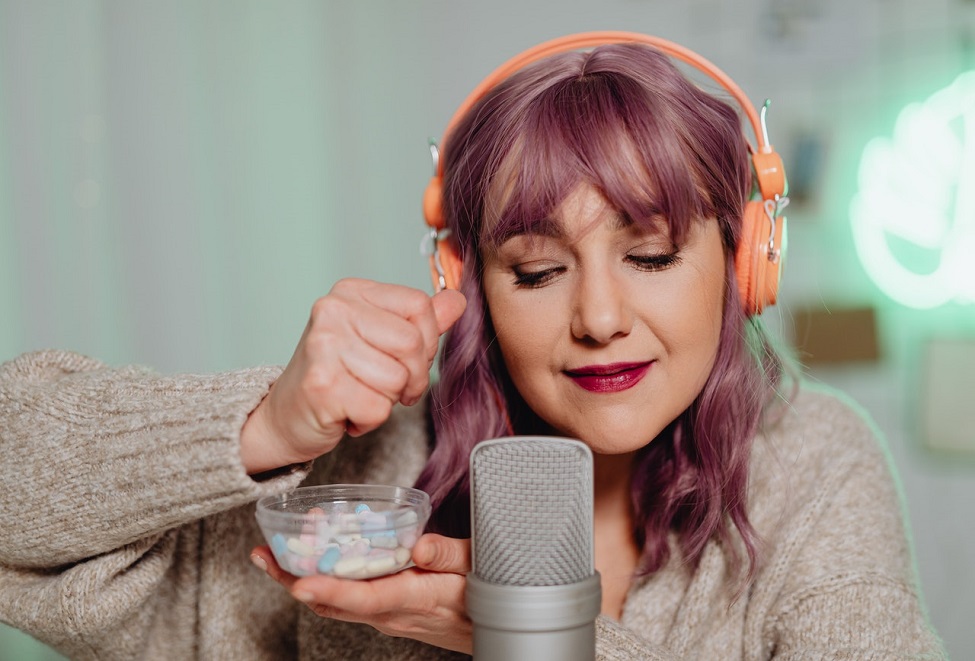
ASMR is one of the top searched terms on YouTube, the world’s second-largest search engine after Google. Brands are increasingly deploying ASMR into their marketing campaigns to drive more consumer engagement.
What Really is the ASMR?
ASMR stands for Autonomous Sensory Meridian Response. It is a tingling, relaxing sensation in response to an ASMR-inducing stimulus that begins in a person’s scalp and goes down through the back of his/her neck and spine to the limbs. Other terms for ASMR are brain orgasm and attention-induced euphoria. The term “ASMR” was coined by Jennifer Allen in the year 2010.
Some of the ASMR triggers are whispering, scratching, soft talking, physical touch, tapping, turning pages of an old book, etc.
Why ASMR is Important for Marketers?
ASMR offers marketers the opportunity to showcase their products to consumers from a sensory perspective by invoking a bodily response. It is not just a food item, electronic product, etc. that is being advertised, but something that elicits a physical feeling in people.
Marketers can use videos having ASMR triggers to provide a unique feeling to consumers. ASMR-inducing video ads are more memorable and delightful than normal ads.
Statistics show that ASMR content interests both males and females. Half of those interested in ASMR content lie in the 18 to 24 years age bracket. Thus, ASMR is a profitable investment in the millennial video market.
YouTube has a huge amount of ASMR content and a top ASMR video can fetch millions of views. Marketers can capitalize on these videos through YouTube advertising or can create their own ASMR-inducing YouTube video ads.
Let’s See How Brands are Using ASMR
Ikea, a furniture and home accessories brand, has created an advert using ASMR on YouTube. The goal of the video is to promote dorm-friendly products to the college students. The video makes use of certain sounds such as those of crinkling and scratching in order to arouse a tingling, relaxing feeling in the viewers. The twenty-five minutes long video has garnered over 3 million views.
Lush, a British cosmetics brand, collaborated with Taylor Darling, an ASMR artist, to create an ASMR-inducing YouTube video for promoting its luxurious lavender-infused products. The video provides viewers the experience of using the brand’s products through soothing sounds such as whispering voice of the ASMR artist, tapping of nails, fizzing sound of water, etc. The video has fetched more than 1.7 million views along with thousands of likes and comments.
By using the ASMR-inducing video advertising campaigns, brands can provide a pleasant, relaxing and memorable experience to viewers. This helps them connect more deeply with the consumers and significantly boost the conversion rate and sales.







